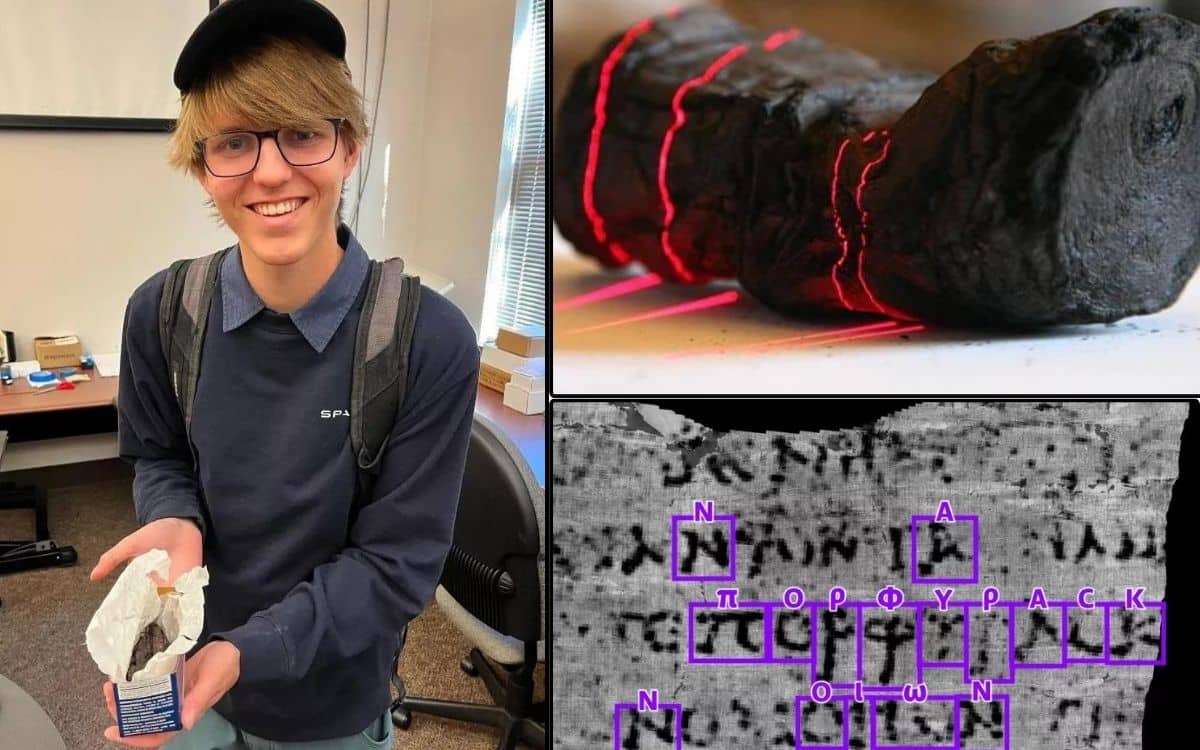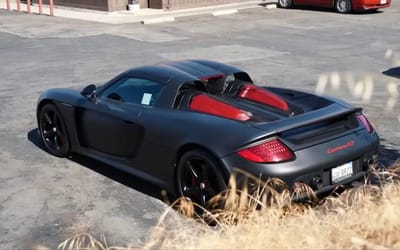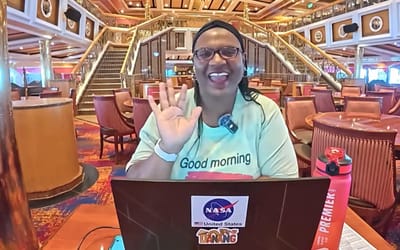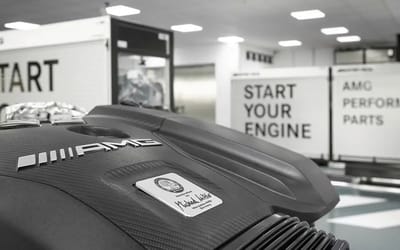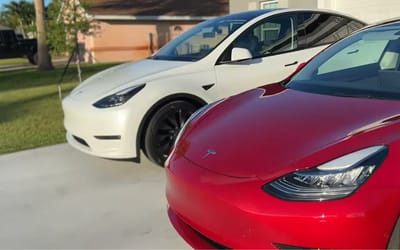Student uses AI to decipher ‘unreadable’ ancient Roman scroll for first time ever
Published on Oct 16, 2023 at 4:30 PM (UTC+4)
by Amelia Jean Hershman-Jones
Last updated on Oct 17, 2023 at 8:07 PM (UTC+4)
Edited by
Kate Bain
History has been made by an undergraduate student who was the first to use AI technology to read part of a 2,000-year-old scroll.
University of Nebraska student, Luke Farritor, took part in the Vesuvius Challenge and won the $40,000 prize.
The competition called on participants to use the emerging technology of AI to uncover the contents of the rolled-up, ancient scripts.
While useful for supercars and smart-phone replacing technology, this is the first time AI has been used in this way.
The papyrus scrolls and their mysterious contents were buried in the Roman city of Herculaneum in 79 CE after Mount Vesuvius erupted.
READ MORE! It’s all over for us because robodogs have just been given AI brains
This was the same eruption that destroyed Pompei.
After the somma-stratovolcano event they were buried under 20 meters (65ft) of mud slides.
The scrolls were fossilized and turned into carbon.
They were first excavated in 1752 after 1,700 years.
“While they were in some ways preserved by the eruption, they were so fragile that they would turn to dust if mishandled,” the website said.
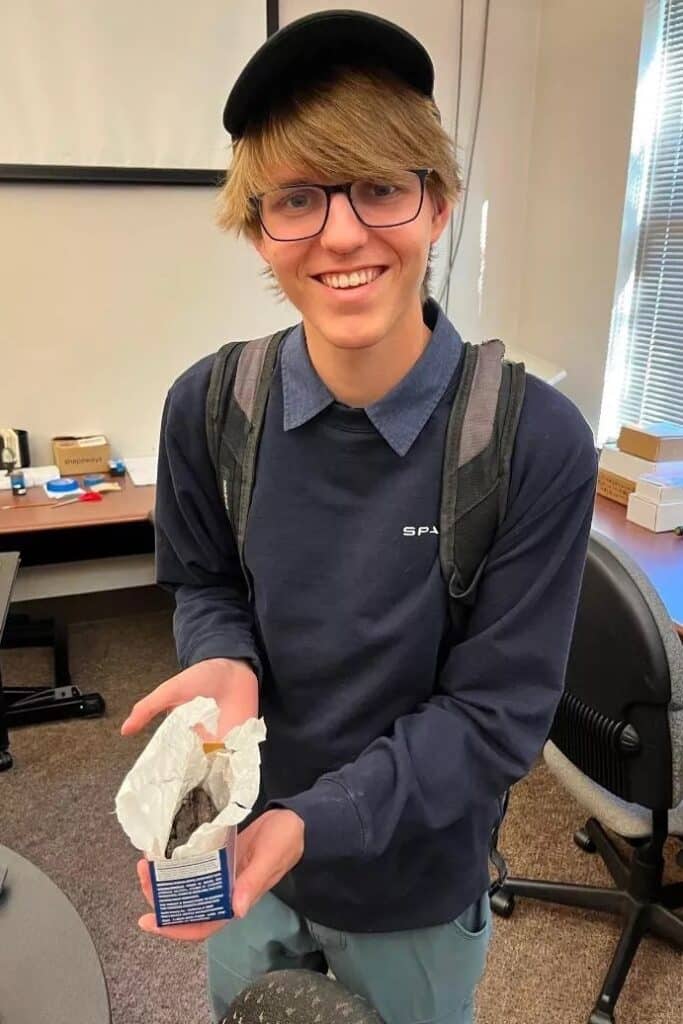
On Thursday (12 October) the Vesuvius Challenge researchers held a press conference.
During the meeting they announced that 21-year-old Farritor, a computer-science major, had won the prize of $40,000.
The groundbreaking undergraduate had successfully read more than 10 characters in a 4-square-centimeter area.
His work was inspired by a previous contestant, Casey Handmer, who was the first person to find convincing evidence of ink.
This followed on from Professor Brent Seales at the University of Kentucky’s EduceLab.
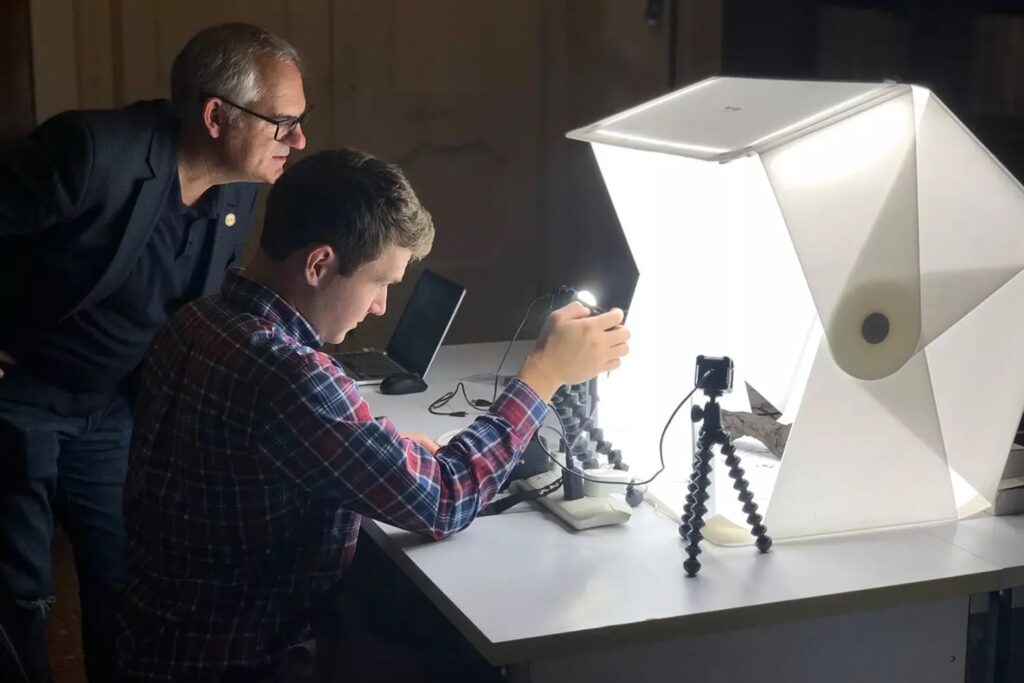
He imaged the scrolls in a particle accelerator to generate a 3D CT-scans at resolutions as high as 4 µm.
Using the images, Farritor developed a machine-learning algorithm according to Nature.
These detected a number of letters on the scroll.
The first word he discovered was “Porphyras”, meaning “purple”.
Farritor became the first contestant to submit the required number of legible letters in the competition. During the press conference, he shared his excitement about the initial moment of spotting the letters.
The prize winner talked about his excitement.
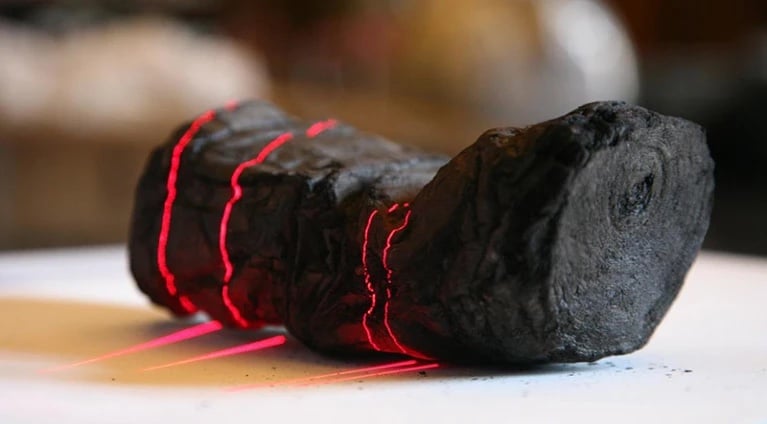
Farritor first made the discovery one night and said he needed to “improve” the photo.
“I was like… let’s keep going until it got to something that looks a lot like the image you’re seeing today,” he said.
“I saw these letters and I just completely freaked out. I freaked out, almost fell over, almost cried,” Farritor said.
“I took a screenshot. I immediately sent it to JP Posma, who sent it to everyone else. I sent it to my family. My mom called and she was like, ‘Hey, like this is the first thing that you sent me that really looks like the letters. This is really cool,'” he explained.
Second-place winner, Youssef Nader, discovered the word in the same area at a later date and was awarded the $10,000 cash prize.
And they aren’t the only students who are having their lives changed by AI.
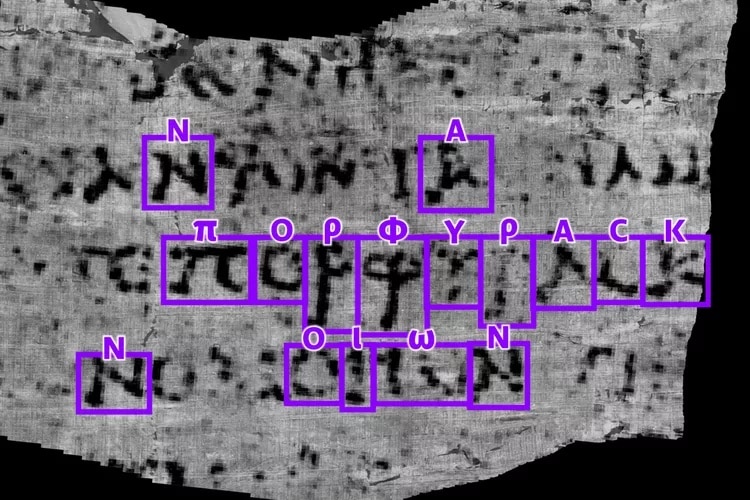
One 16-year-old AI founder has a startup valued at eight figures and is skipping college after debuting a beta version of her AI software in 2021 and raising more than $450,000 from multiple backers.
Papyrologist at the University of Naples, Federica Nicolardi, was a member of the academic committee reviewing Farritor’s findings.
She told Nature, that the scrolls were so difficult to decipher because they are “all crumpled and crushed”.
Nicolardi said that Farritor’s discovery was “a dream” that she can “actually see something from the inside of a scroll.”
Thea Sommerschield, a historian of ancient Greece and Rome at Ca’ Foscari University of Venice, explained that Farritor’s discovery could “revolutionize our knowledge of ancient history and literature.”
There are still several unread scrolls.
The next stage of the Vesuvius Challenge asks researchers to read four passages in the two scanned scrolls.
The prize: $700,000.
DISCOVER SBX CARS: The global premium car auction platform powered by Supercar Blondie
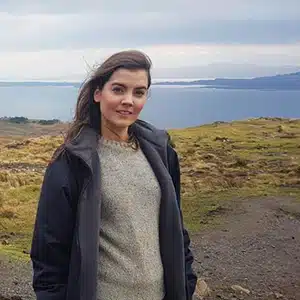
All Supercar Blondie contributors undergo editorial review and fact-checking to ensure accuracy and authority in automotive journalism. After gaining her BA Hons in French and English at the University of Nottingham, Amelia embarked on a vocational diploma from the National Council for the Training of Journalists (NCTJ). This led to numerous opportunities, from interning at Vogue to being on the small team that launched Women’s Health magazine in the UK, which was named the PPA Consumer magazine of the year for three years running. As Health, Beauty and Fitness editor, Amelia personally received a Johnson & Johnson Award and was shortlisted for both PPA and BSME titles. Since then, Amelia has created content for numerous titles and brands, including the Telegraph, 111 Skin, Waitrose, Red magazine, Stylist, and Elle, as well as being Head of Content at Vitality and Editor in Chief at INLondon magazine. “My superpower is translating technical jargon about the mechanical workings of a supercar into a relatable story you’ll want to share with your friends after you’ve read it.” After joining the SB Media family as a senior journalist in September of 2023, Amelia’s role has evolved to see her heading up the SEO output of the editorial team. From researching the most ‘Google-able’ key terms to producing evergreen content - it’s been a time of hard work, growth, and success for the editorial team and the Supercar Blondie website. “I like to think of myself as a ‘method journalist’. In other words: I live and breathe whatever I am writing about. When writing about fitness, I trained as a personal trainer, and as a beauty editor, I completed an ‘expert’ in scent diploma with the Fragrance Foundation. “During my tenure at Supercar Blondie, however, I did something I never thought possible: I passed my driving test at the age of 36. One day I’d love to train as a mechanic to better understand what happens under the hood, too. “My sweet spot is providing readers with a ‘takeaway’ (read: something new they didn’t know before) after reading every one of my stories. While I don’t claim to be an expert in the automotive world, I know the experts and bodies in the field to rely on to provide our readers with an informative and thought-provoking story every time they visit the site.”
